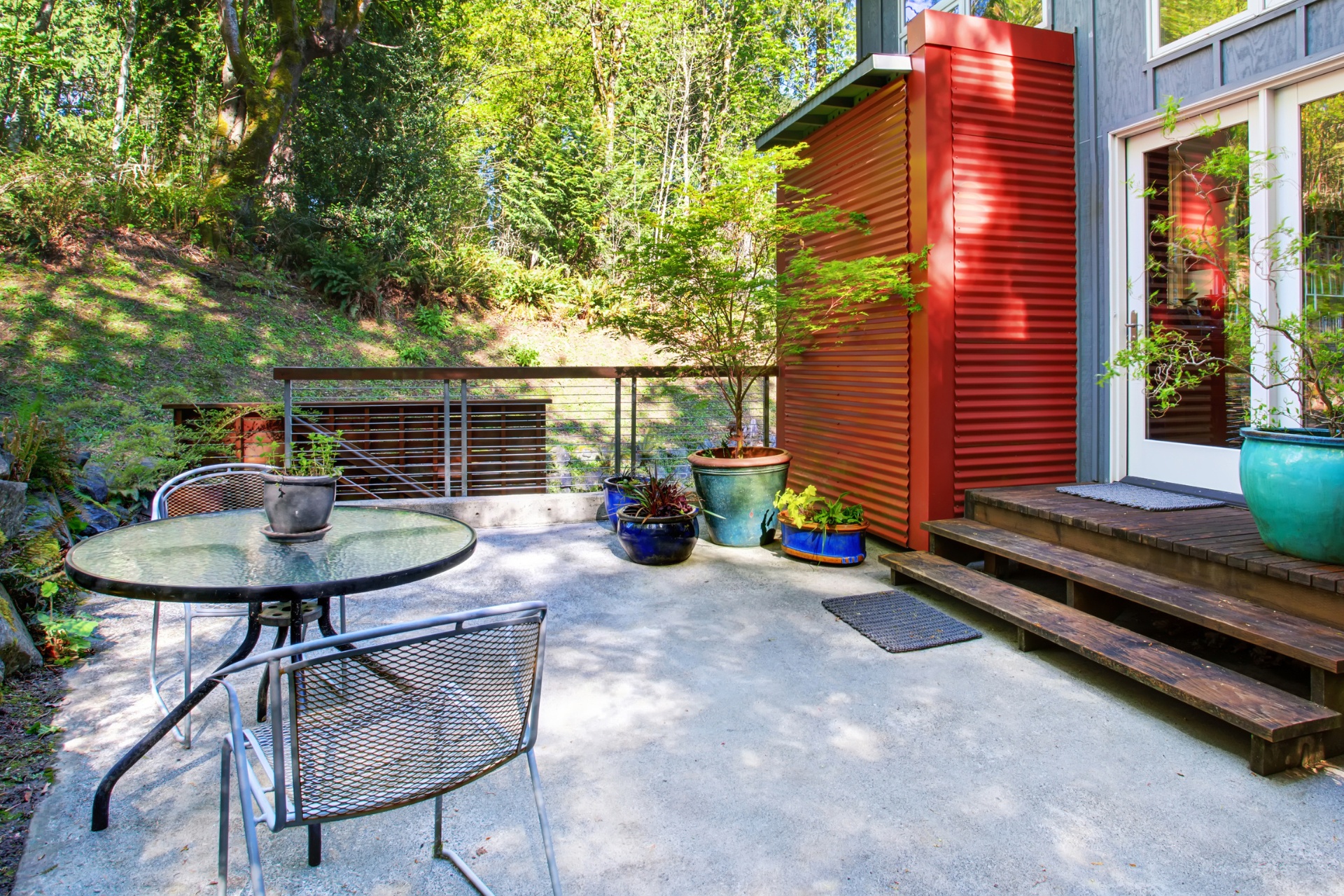Painting your concrete patio enhances its look, offers a cost-effective facelift, protects the surface, and lets you personalize its appearance.
However, you’ll face challenges, including paint fading, potentially slippery conditions, ongoing maintenance costs, and the need for regular touch-ups to keep it looking fresh.
Proper surface preparation and choosing the right paint, considering UV protection and compatibility with outdoor conditions, are essential steps.
With careful planning and attention to these factors, you can ensure your patio remains an appealing, functional space.
Benefits of Patio Painting
Painting your concrete patio can significantly enhance its appearance, offering a cost-effective way to revitalize an otherwise dull outdoor space.
With all the color options available, you’re not just adding a layer of protection to the concrete; you’re opening up a world of aesthetic enhancement that can complement your home’s exterior and landscape.
The beauty of painting lies in its versatility, allowing for a personalized touch that reflects your style and preferences.
The right choice of color can make your patio look larger or create a cozy, intimate space. This level of customization is invaluable for homeowners looking to achieve a specific ambiance without the need for extensive renovations.
Through the strategic use of color, you can also highlight certain features of your patio or cleverly disguise any imperfections.
This makes painting a concrete patio an appealing option for those looking to upgrade their outdoor living space.
Drawbacks of Patio Painting
While the aesthetic and personalization benefits of painting your concrete patio are significant, it’s important to consider the potential drawbacks that may impact its longevity and maintenance.
Here’s a detailed list of the disadvantages you might face:
- Color Fading: Exposure to sunlight and harsh weather conditions can significantly diminish the vibrancy of the paint, leading to a need for frequent touch-ups or a complete repaint much sooner than you’d expect. This fading can compromise the aesthetic appeal you initially aimed for, turning a once bright and inviting space into a dull, lackluster area.
- Slippery Surface: Safety becomes a concern when painting a concrete patio. The painted surface can become slippery, especially when wet. This increases the risk of slips and falls, posing a hazard to you, your family, and guests. Choosing a paint with a non-slip additive can mitigate this issue, but it’s an additional step and expense you need to consider.
- Cost Over Time: While painting your patio might seem like a cost-effective way to enhance its appearance, the need for regular maintenance, touch-ups, and the potential for more frequent repainting can increase your costs over time.
Maintenance Requirements
Maintaining a painted concrete patio requires diligent care and periodic touch-ups to preserve its aesthetic appeal and functionality.
First and foremost is cleaning frequency. Regular cleaning, at least once a month, is essential to prevent dirt and grime from embedding into the paint, which can lead to premature wear and discoloration.
Use a gentle cleaner, and avoid abrasive tools that could scratch or chip the paint.
Weather impact plays a significant role in the maintenance schedule. Painted patios in areas with harsh weather conditions, such as extreme heat, cold, or moisture, may require more frequent inspections and touch-ups.
UV rays can fade the paint over time, while rain and snow can lead to water damage if the paint isn’t properly sealed. To avoid long-term damage, it’s important to assess the patio after significant weather events and address any issues promptly.
Surface Preparation Tips
Proper preparation ensures the paint adheres well and lasts longer. Here are crucial steps to prepare your concrete patio:
- Clean the Surface Thoroughly: Begin by removing any debris, dust, or stains from the concrete. Use a power washer for the most effective cleaning, ensuring the surface is completely clean. This step is vital because paint won’t adhere well to a dirty surface.
- Repair Cracks and Damage: Examine the concrete for any cracks or damage. Weather can cause or exacerbate these issues over time. Use a quality concrete crack filler to repair these areas, ensuring a smooth, uniform surface. Allow sufficient time for the repair to cure before painting.
- Ensure the Surface Is Completely Dry: After cleaning and repair, allow the concrete to dry thoroughly. This might take at least 24 hours, depending on weather conditions. Painting over damp concrete can lead to peeling and blistering of the paint over time.
Choosing the Right Paint
Selecting the appropriate paint for your concrete patio is a critical step in ensuring both aesthetic appeal and long-term durability.
When it comes to color selection, consider the surrounding landscape and architectural style of your home. You’ll want a color that complements these elements, enhancing the overall appearance of your outdoor space.
Lighter colors tend to reflect sunlight, reducing surface temperature, while darker colors can absorb heat, making the patio uncomfortably warm during sunny days.
Weather resistance is equally important. Your patio is exposed to various elements, including rain, snow, and extreme temperatures, which can all take a toll on the paint’s integrity.
Opt for a paint specifically designed for outdoor concrete surfaces, with features such as UV protection and water resistance. These properties help prevent fading, peeling, and cracking, ensuring your patio maintains its appearance over time.

